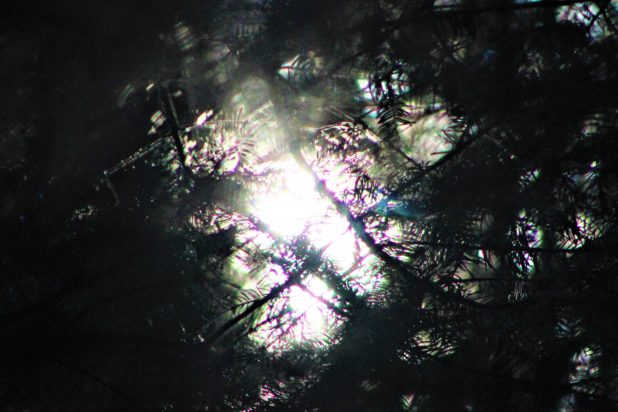Commentary
The forest’s sweet song
March 12, 2019

March 12, 2019
By Nate Smelle
FALLING ASLEEP THE other night looking up at the stars from my bed, I woke the next morning to the view of a clear blue sky and melting icicles on my front porch. Switching on my radio to find my favourite Corey Hart song of all time, I soon became completely engaged in the weather report.
Realizing that the icicles had already told me what the radio confirmed, I began piling my tree-tapping equipment in the sled. From the below and above zero temperatures forecasted for the next few days there was no doubt that the sap was about to flow.
Bundling up, I laced up my tallest pair of boots and began trudging through the forest towards the cluster of maple trees in the far-west corner of the property.
With a clear trail ahead this walk usually takes about 20 minutes at a leisurely pace. On this day, thanks to the waist-deep snow between me and my destination, at least 40 minutes had passed by the time I reached the halfway point.
Flopping down in the snow beside one of the largest maple trees on the property, I peered up through the branches at a pair of black-capped chickadees calling out and hopping after each other as they tend to do at this time of year.
Lounging in my gravity sculpted seat in a mixed state of exhaustion and elation, I took a moment to appreciate a few of the first hints of spring. As I did so, I thought of all the discarded coke bottles from the 1950s I had found under this same tree when I first moved here; and how whoever left them behind had likely done so after experiencing moments similar to the ones I was enjoying.
Looking closer at the tree, I realized its trunk was roughly the same size as a stump I had counted 120 growth rings on last summer. For more than a century the tree beside me has been nurturing the forest floor with its annual deposit of leaves, filtering the rain, cleaning the air of greenhouse gases, providing habitat and producing oxygen.
Staring at it in amazement, I smiled as I thought about how it would soon be pitching in to fight food insecurity. Drilling a pair of holes, one on each side of the tree, I gently pounded in the taps until they were deep enough to harness the flow of the sap.
Once I had hung the buckets and attached the lids, I loaded my supplies back into the sled and continued on my way. As I blazed the trail towards the sugar bush, I noticed that a few of the trees along my path that I had considered too small to tap back in 2015 had added enough girth to warrant tapping. Making a note to pick up more supplies, I carried on for another 20 minutes or so until I had reached my destination.
Resting against one of the massive sugar maples that had lured me deep into the woods, it occurred to me how much history this gathering of centenarians had endured and enjoyed while standing in the same place.
If these trees could talk, I thought to myself. Then I remembered how German forester Peter Wohlleben explained the language of trees in his book, The Hidden Life of Trees: What They Feel, How They Communicate — Discoveries From a Secret World.
Through his research, Wohlleben has discovered how trees in a forest care for each other by sharing information and nutrients underground via a network of soil fungi that he calls the “wood wide web.”
Unable to count every tree within sight, it donned on me that this forest had been engaged in a conversation about long-term growth and prosperity long before I was born.
Though we may not be able to understand exactly what trees are communicating to one another, there are many lessons to learn from their subterranean song. What trees seem to understand on a profoundly deeper level than many humans, is that individuals thrive in harmony with their community. Lacking any notion of greed, the forest gives back to the biotic community that supports it, without asking for anything in return. Yet still, the more it shares, the more resilient it becomes. While some view trees strictly in terms of their monetary worth, it is clear that the value they bring to our existence cannot be measured in dollar signs or jars of syrup.

















